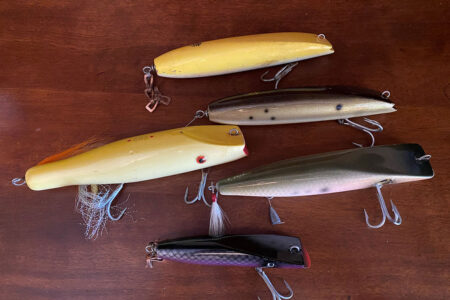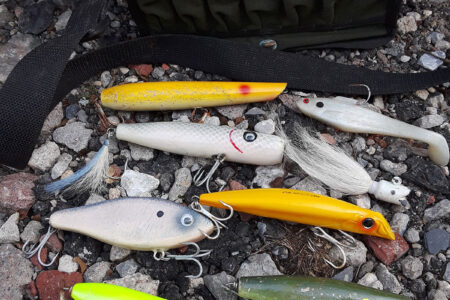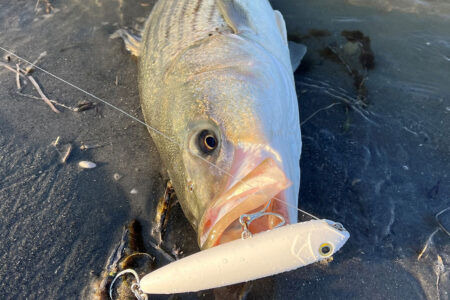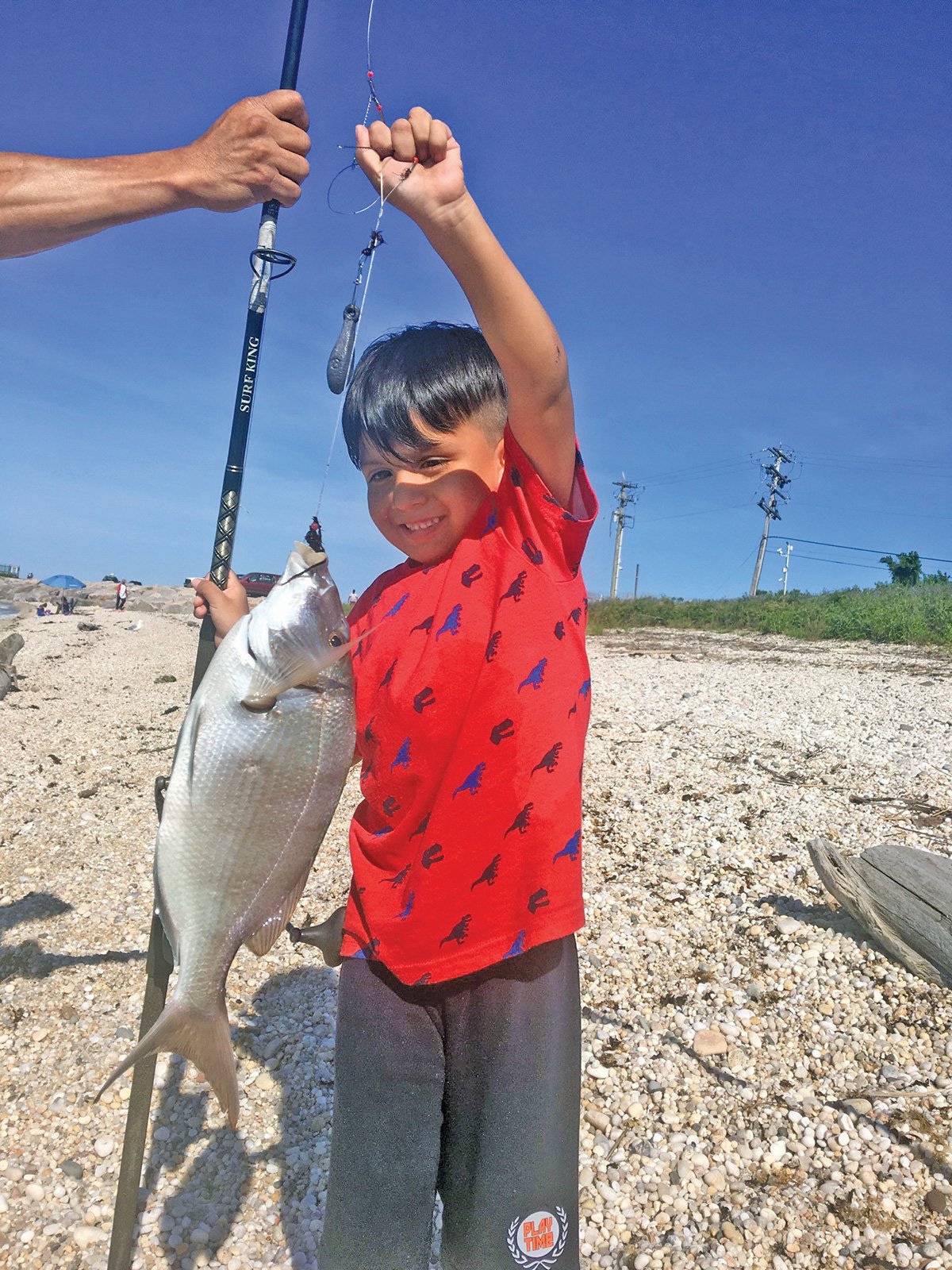
Whether it is during the summer doldrums, a lull in the spring or fall action, or just the urge to do something different and put some good eating fish on the table, porgies are there for you throughout most of the season. Porgies, or scup, have been so abundant in recent years that they are being caught in shore areas that rarely saw any numbers of these tasty saltwater panfish in the past. Even better is that the size of some of these shore caught fish is as impressive as some of those being caught by anglers in boats. Instead of hitting the golf course when you need a break from hunting down stripers or blues, or you tire of catching nothing but short fluke, think about switching out your plug bag for a handful of sinkers and hooks, pick up some clams or worms, and don’t forget the sand spike.
Porgies are plentiful along our shorelines from late May through September, and even into October. They are easy to catch, and also a great option if you want to keep kids entertained with some rod bending action. Both the north and south shores of the island have great locations where porgies can be found. The North Shore, where rocky bottoms and boulders are prevalent, will have fish pretty much along the whole shoreline. A couple of locations that stand out are Mt. Sinai, Mattituck and Rocky Point, and Caumsett and Wildwood state parks.
Along the South Shore, focus on rocky areas like oceanfront or inlet jetties, where you are also likely to catch triggerfish along with porgies. Sea bass are also a possible bycatch along both the North and South shores. A few notable locations along the South Shore include the Shinnecock and Moriches inlet jetties, Sore Thumb inside Fire Island Inlet, the Far Rockaway jetties, and the sea wall in Jamaica Bay. There are also some ocean beaches that have been producing lots of porgies the last few years, including the Town Beach in Montauk. Good porgy action can also be found along Montauk’s north side beaches.
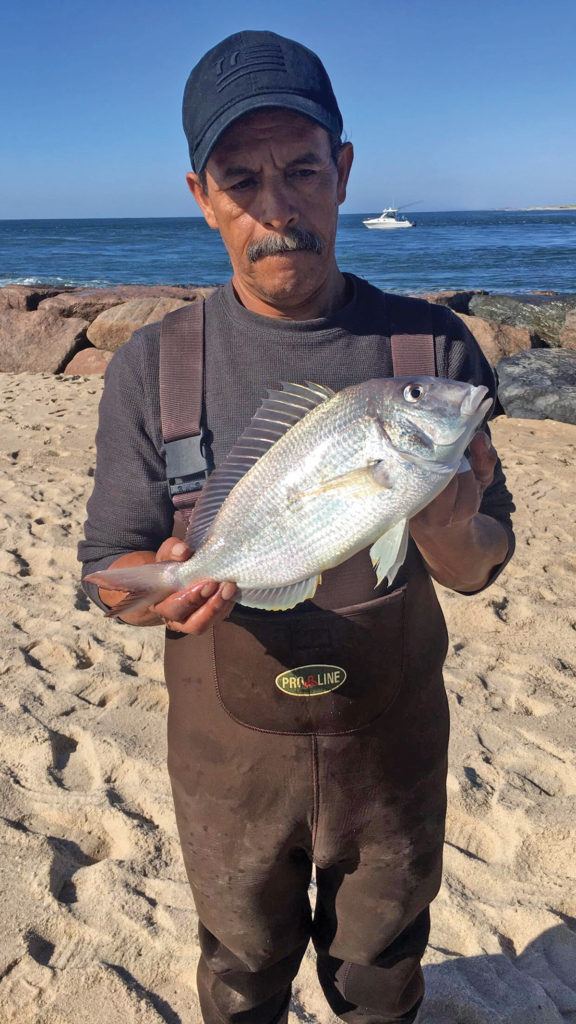
As I mentioned before porgies do appeal to everyone. One of the main reasons why so many people target them is because they don’t require a fancy setup or a lot of skill to catch them. Something along the lines of a seven or eight foot spinning rod with a fairly stiff tip section is ideal for most areas. Match the reel to the rod and spool it with 15-pound test monofilament or 30-pound test braid. I always lean toward using the braid since braid is more sensitive and can feel lighter bites better.
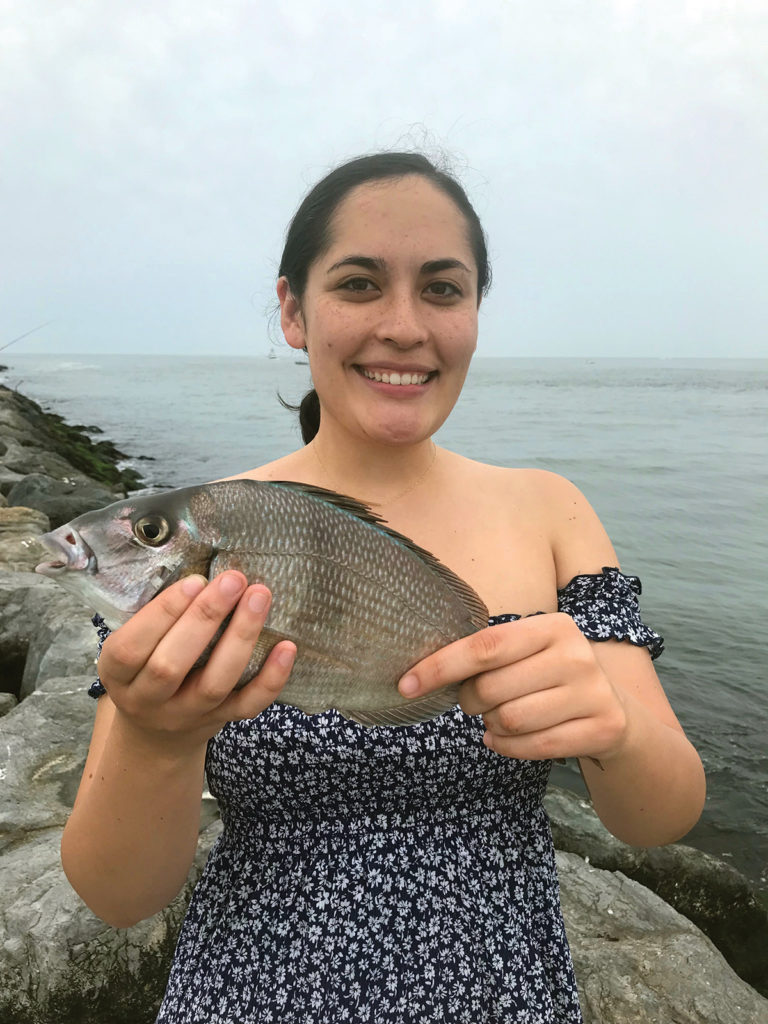
When picking out rigs the only advice I would give is to pick up a few different sized double-hook rigs. Start with a smaller #6 size hook and make an adjustment after seeing what size fish are in the area. If bigger porgies are taking your baits, go to larger hooks in the #4 to #1 range. These rigs usually come equipped with a sinker clip. As far as sinkers go, bank sinkers are the way to go. The weight of the sinker really depends on the depth of the water and the current. Many North Shore spots can be fished with sinkers in the 2-ounce range. When fishing around inlet jetties, the weight of the sinker can range from two to six ounces depending on the current. As the current slows down you can reduce the weight, and when the current speeds up, increase the weight enough to maintain contact with the bottom. Most porgy locations have rocks littering the bottom and bank sinkers are less likely to get snagged than other types. Even with bank sinkers, expect to break off some rigs, so always bring along extra sinkers and rigs for this type of fishing. One thing I’ve noticed when fishing jetties is the closer to the rocks I placed my bait, the more bites I got. Many of the fish I catch are within twenty feet of the base of the jetty, hanging tight to the structure.
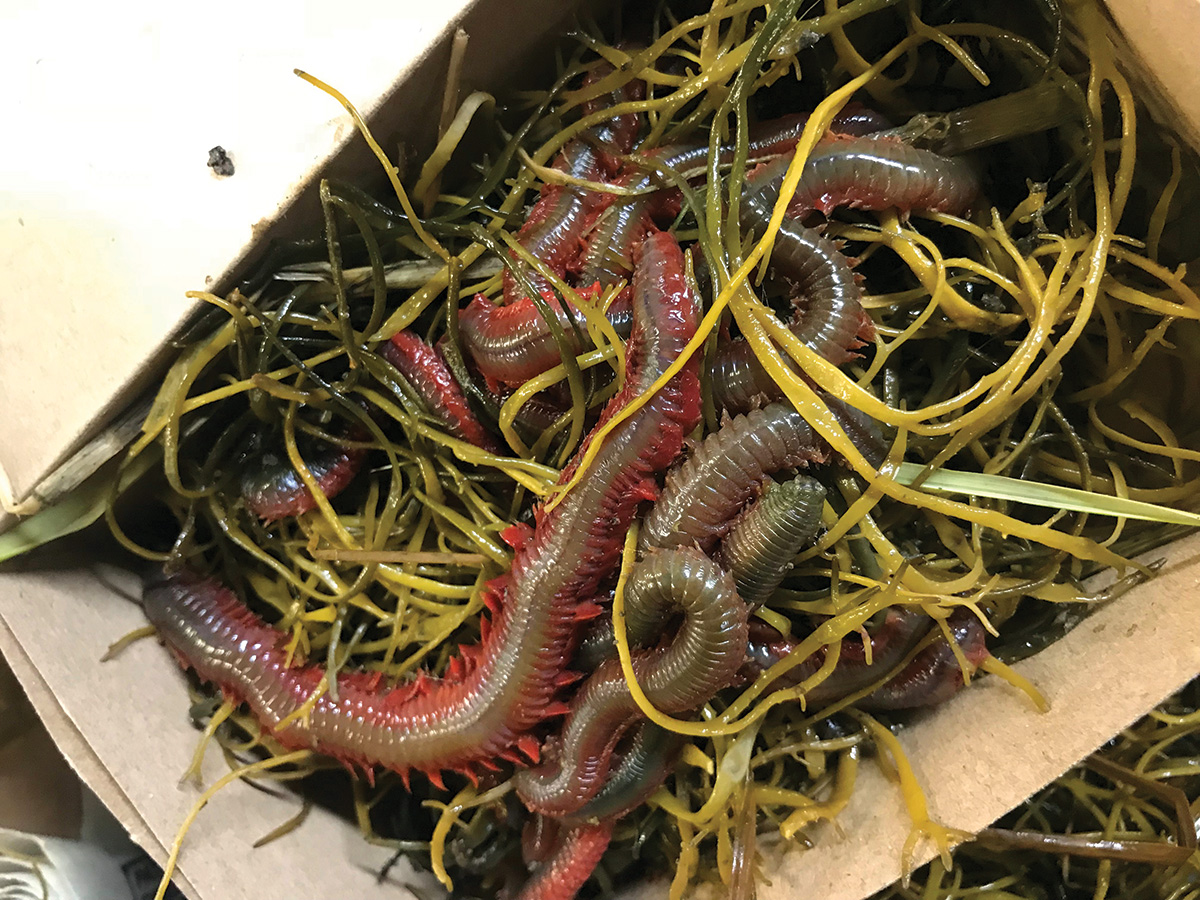
Porgies are ferocious feeders. An array of different baits can be used to target them, including clam, sandworms, bloodworms and squid. The addition of some clam chum can prolong a bite by keeping the fish in the general vicinity of your bait. What I recommend is to take at least two different kinds of baits along with you on a trip. I’ve seen times where the fish are more keyed in on one bait over another. Also remember that small pieces of bait are all that’s necessary since porgies have small mouths, and don’t forget a bait knife and cutting board. For those looking to put some fish on the dinner table, porgies make a great tasting meal. You can gut them, cut off the head and cook the rest of the body whole. Just be sure to scale them thoroughly beforehand. Typically I will do this with the smaller ones. If you get into some large porgies, you can fillet them and get a couple of nice pieces of meat for whatever recipe you choose. Grilling them is my favorite way to cook them, but there are many recipes to choose from, and you can never go wrong dredging them in bread crumbs or flour and dropping them into a fry pan.
Keep in mind the regulations when deciding to keep fish. The minimum size limit on porgies was reduced to nine inches this year, with a bag limit of thirty fish per person per day. The season opened May 1st and runs through December 31st.

